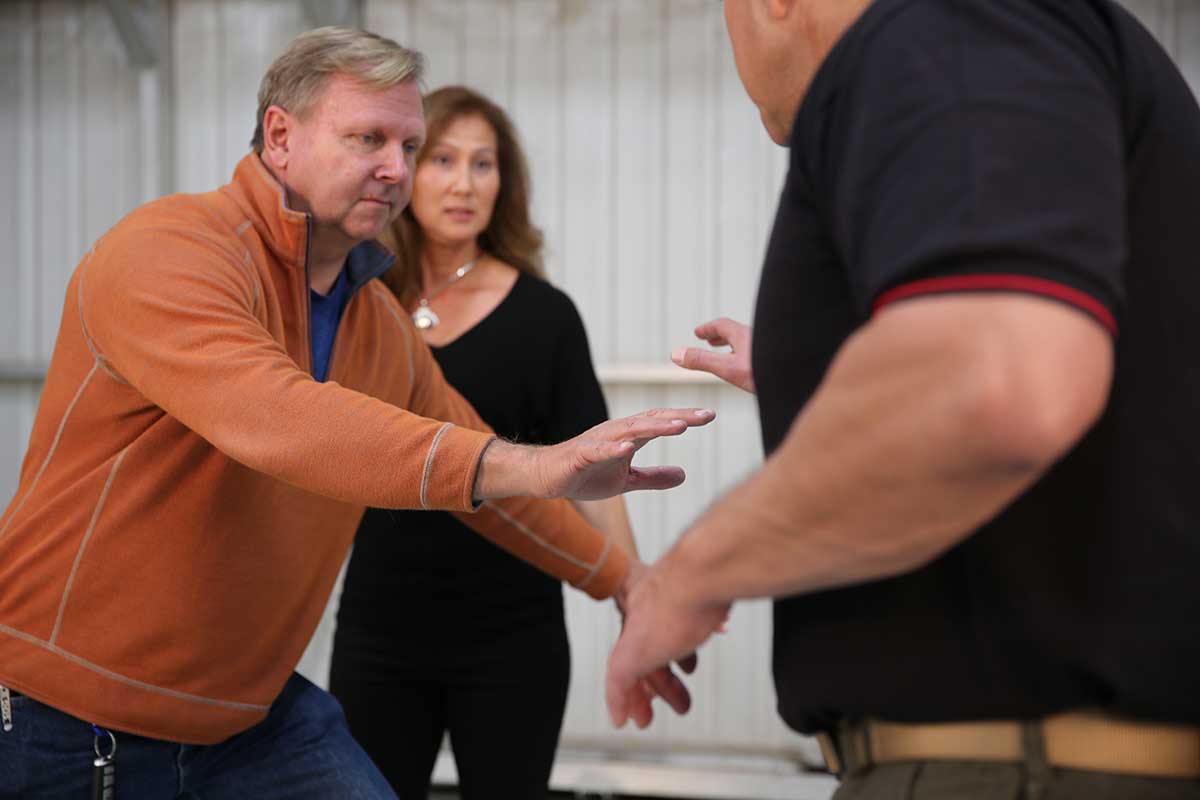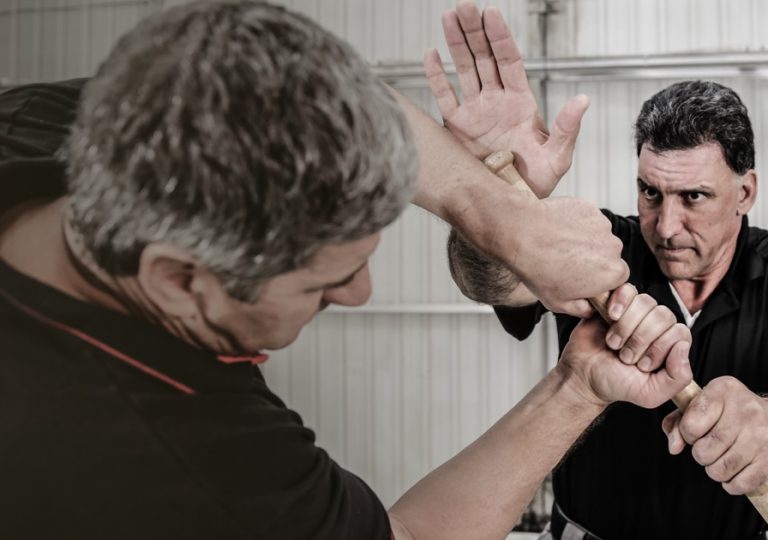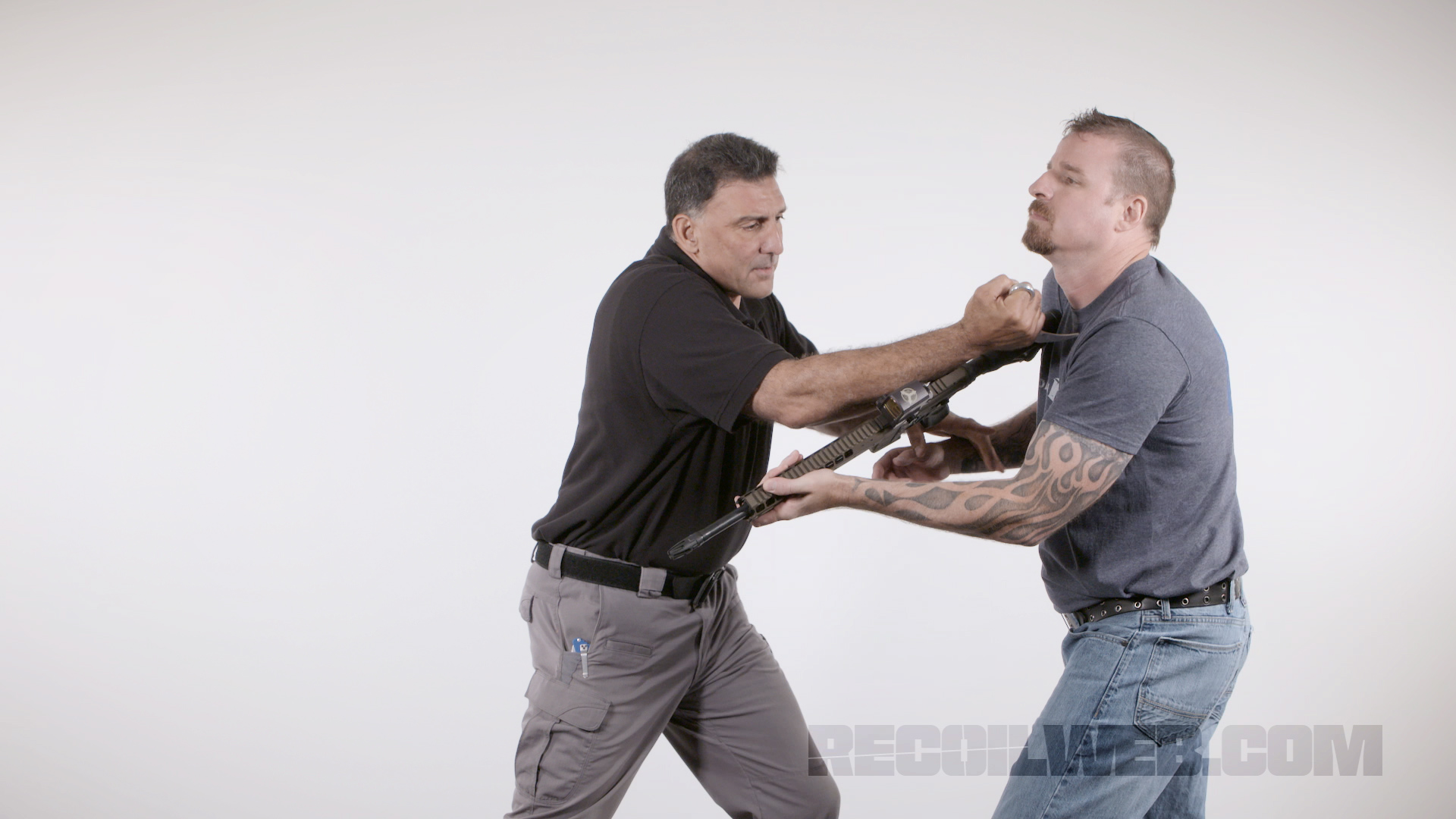On this week’s episode of The Mag Life Podcast, Daniel is joined by the immensely knowledgeable, Steve Tarani. With decades in the defense, law enforcement, and intelligence communities, Steve is a highly-respected firearm, defensive tactics, bladed weapons, and personal protection instructor. As of late, Tarani has specialized in awareness-based training, having incorporated this into his training classes as well as his books.
Together, Daniel and Steve discuss the vital importance of soft skills versus hard skills, situational awareness training, and overcoming fear in a fight.
Host: Daniel Shaw
Guest: Steve Tarani
Introduction/Timeline: Eric Huh
00:37 What is your profession?
Daniel starts off the conversation by asking what Steve’s occupation entails. In a general sense, Steve Tarani would describe himself as a teacher of practical hard and soft skills. Hard skills is defined by talents or abilities that can be measured, often associated with on-the-job training such as programming, bookkeeping, foreign language skills, shooting, and the like. Soft skills by contrast relate more towards universal traits such as leadership, teamwork, communication, and adaptability. Over the decades of his teaching experience, Steve has leaned more toward soft skills as he finds these to be more applicable in day-to-day situations. Although he’s made a career in training others, Steve constantly strives to keep his knowledge and skills up to date.

“So, I keep one foot in the training world and one foot in the ops world… I really don’t want to be one of those guys ‘Hey twenty years ago when I did this…’ ya know? Times change, people change, tactics change, gear changes. For your information to remain relevant to you, you to have to be in it, I think, day-to-day.”
04:26 Reacting to threats and close protection security
The conversation shifts to the topic of close protection security and reacting to unexpected threats. Obviously, bodyguard work differs greatly from normal self-defense tactics. The vast majority of concealed carry shooters would react to a threat by immediately going for their gun and drawing. Steve reveals that in the world of close protection, he was taught that immediately going for the gun is a setup for failure. The time it takes to go for the firearm is ample time for the attacker to shoot at the VIP that you’ve been charged to protect.
Instead, Steve was taught to prioritize observing threats in their entirety and to move the client away from danger. He uses the tragic incident of the Titanic as an analogy, saying if one could observe and see icebergs coming from a distance, it would make far more sense to simply avoid a head-on collision with them. In his eyes, the firearm is akin to a “lifeboat” on the Titanic, the last resort option and not a primary one. Processing and reacting to threats fall into three main categories: being proactive, active, and reactive.
Taking notes from the book Left of Bang: How the Marine Corps’ Combat Hunter Program Can Save Your Life by Jason Riley, Steve explains that the proactive and active phases are how we utilize our soft skills before a dangerous incident occurs or the “bang.” How we react after to the initial encounter with a threat is the reactive phase which forces out the hard skills. For example, soft skills such as using verbal de-escalation or analyzing a situation can avoid a conflict but should it occur anyways, the fighting abilities that come from hard skills come into play.
08:52 Soft skills vs hard skills in your everyday life
Daniel asks Steve to explain the use of soft skills versus hard skills in the context of the average armed citizen. Steve believes that everything requires context and that people should analyze what they would realistically require in their day-to-day lives. Even with your typical federal agent, law enforcement officer, or active duty Marine, the actual likelihood of requiring hard combative skills versus universal soft skills for daily use is very low. This is occurrence is even lower for the average civilian.

Steve recalls an incident where one of his students was involved in a mugging. He was justified at every level of using force: the backstop was safe, the mugger was threatening violence, and he was legally carrying with a license. However, he thought a few steps ahead about the consequences of using force. In the state of California, using his firearm even in a justified defensive manner would result in thousands of dollars of legal fees, years of legal battle, and the possibility of losing what he has. Instead, he threw his wallet to the mugger and let the situation end peacefully. This would be a prime example of using soft skills over hard skills to not only protect oneself but also to avoid future problems.
Daniel reflects upon how far too many gun owners today refuse to utilize the same level of judgment as Steven’s student. There is a subculture of gun owners who boast about the day they get to use their firearms to kill someone. In Daniel’s eyes, the bravado is simply a mask for poor judgment and lack of experience.
15:23 How to use your mind to stay safe
Steven speaks upon one of the most important skills to survival: the mind. More specifically, how to critically assess a given situation in order to make intelligent decisions that can increase your chances of survival. Daniel relates to this heavily, drawing upon the lessons taught by his co-host, Varg Freeborn, of effectively concealing one’s intent. By having the mindset of being covert with one’s actions, you can gain the upper hand over an attacker.
Steven brings upon the example of officers he knows involved in an arrest of a violent suspect. The suspect was questioned as to why he did not resist and did not attack the officers despite having the drop on them. He replied by saying he felt something in his gut that he knew these officers in particular knew something he did not. The way these officers carried themselves and presented themselves informed the suspect this was a fight he was not willing to take for his own safety.
On the other side of the coin, Steven discusses the mentality of an attacker or a “bad guy”, who typically looks for easy targets with the potential of high reward.

Attackers look for targets of opportunity. Having combative skills is important but taking actions that prevent a fight from even occurring is even more vital.
“Bad guys are bad guys, they go for lower hanging fruit… The bad guy is looking for potential targets. So what does he look for? He looks for someone that appears to be weak or appears to be alone or that appears to be unaware… You can be any one of those three… But all three together?… That is an indicator to them, hey this is potentially a soft target.”
Steven goes on to describe the 5 stages of the attack cycle: information gathering, establishing relationships and rapport, exploitation, and execution. Primarily the mindset aspect and seeking a target is the first phase. If one is able to present themselves as a hard target and to make themselves less likely to be even chosen for attack, this dramatically increases the chances of survival. The attack cannot occur if the attacker does not find you to be someone worth risking their life for.
22:40 Importance of soft skills outside of combat
Daniel notes the sheer overabundance of hard skill displays on social media. To him, this is an indicator of some people over-prioritizing a very specific skill for performative reasons. While it’s certainly never a bad thing if someone can do a shooting drill with proficiency and speed, but in the long run what does that actually do for them? If that hard skill is not taken into the mindset of integrating with normal day-to-day soft skills, that is essentially a parlor trick with no use outside of the range. A fast draw time and tight splits do not mean a whole lot if you’re unable to observe the threats around you or pick up on social cues.
Steve makes the argument having strong soft skills simply makes your life better, beyond that of any combative scenario. Certainly, no one wants to be around the person who never listens or only wants to be the one heard or is unable to make friends and connections.
27:47 What are the top soft skills everyone should be training?
Daniel implores Steve about what he considers to be the top soft skills people should seek to acquire. Steve explains that the first would be simply admitting your own faults and areas of improvement. As the saying goes, you don’t know what you don’t know. Without coming to that realization, the process of actually training to become more proficient cannot occur.
Secondly, Steven circles back to the earlier topic of understanding context and the practicality of skillsets. 98% of the time you will be using soft skills to go about your day to day life, the other 2% is the rare occurrence you will have to use your hard skills. Working on what you are more likely to encounter will not only make you safer but make you a better person.
Thirdly, Steve emphasizes the idea of being proactive. As Sun Tzu once said, “Every battle is won before it’s ever fought.” By taking preemptive measures to avoid dangerous or compromising situations, you effectively win a fight without having to fight. This stems from soft skills such as situational awareness and quick decision-making.
He quotes famous author Henry David Thoreau,
“It’s not what you look at that matters, it’s what you see.”
Too often people will make visual contact with their environment but do not mentally engage with what they are processing. Being able to truly analyze your environment is what allows situational awareness to buy you time.
37:58 Applying situational awareness
Daniel invents a hypothetical scenario in which he, his son, and Steve are at a Texan BBQ restaurant and must be providing protection for the child. He asks how would Steve go about this situation. Steve would preemptively seek out as much information about the establishment ahead of time and its general location: what will the weather be like that day, is it a bad part of town, is there a major event occurring nearby, what is the exact layout of the restaurant, what is the road layout, what is the time of day, etc.
Next, Steve would study the interior of the restaurant and position his group closest to the kitchen side exit. He understands that the most likely occurrence of a would-be attacker would be from the main exits and entrances. As such, Steve prioritizes the kitchen exit as it not nearly as populated or targeted.
Likewise, Daniel always plans his range days or training classes by first establishing an emergency medical protocol so that no one is simply making things up as they go. Steve states that simply having a plan eliminates 80%-90% of the guesswork and allows you the flexibility to even have a Plan B or Plan C.
45:18 Fight or flight, overcoming the “freeze”
Steve and Daniel discuss overcoming your own fears and fighting your own self-preservation when providing protection for someone else. For Steve, he has students that revealed to him that they worry about freezing during a violent confrontation despite their training. This is in fact an indication of an intelligent defender, someone who is honest with themselves and their capabilities. Daniel states that he has to fight his own inner voice telling him to look out for his own safety when he is around his family. Mentally, he makes the switch occur to prioritize his child’s and his wife’s safety above his own.

The key to overcoming your own fear in a stress-induced situation lies in understanding your own capabilities. (Photo credit: Recoilweb.com)
Steve breaks down what he believes is the key to overcoming in the moment fear during a stressful situation:
“We as humans when faced with a real-world threat, that survival instinct kicks in. And for a little bit… the mind races and it hits three things: Is this new [information] or Is this unfamiliar? Is this threatening? If something is new, something is unfamiliar, and something is threatening those are three things that cause the brain to just spin in its tracks, trying to figure it out. However, if you’ve done some training and you’ve been in some force on force… then this situation is no longer new. So, you take one-third of that power [of fear] away.”
With further experience and training, over time one could possibly eliminate whatever may be unfamiliar, thus also eliminating two-thirds of the power of fear.
53:30 How to develop soft skills?
Daniel asks Steve, how can the average person develop those lifesaving soft skills? Steve encourages everyone to essentially follow what he does: constantly seek up-to-date information and study history. Both online and printed resources provide insight on specific subject matters that save people the trouble of trial and error.
In most cases, what was true in combat thousands of years ago is often true today, with the main difference being technology. Training has never been more accessible. Steve encourages people to go to their local gun ranges and seek out a fundamentals class, as the majority of the content taught is similar across the board. Above all else, Steve says the resources and instruction are out there but that we must simply take the first step.
To learn more about Steve Tarani
Visit his website: https://stevetarani.com
Sign up for his newsletter: https://stevetarani.com/connect
Follow him on Facebook: https://www.facebook.com/steve.tarani
Follow him on Twitter: https://twitter.com/SteveTarani
Article/Show notes by Eric Huh
Podcast: Play in new window | Download


Pingback: 193 – Steve Tarani – The Mag Life – Guns and Pride()